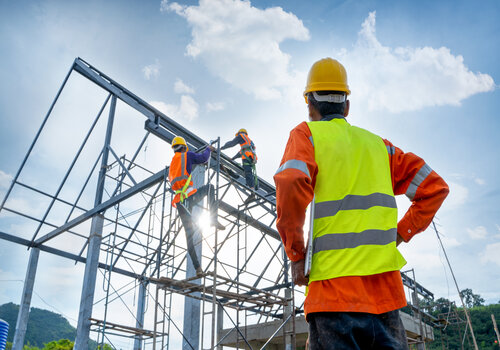The pandemic effectively ended the longest period of expansion in the US economy since World War II and is negatively affecting many industries, weakening the economy, decreasing GDP and causing a lot of uncertainty in the markets.
It can be difficult to be confident in your plans for your company in 2021 and 2022 when you’re not sure how larger macro-economic forces will impact your business.
Looking for the upswing
Everyone wants a recovery in 2021. And, according to Alex Carrick, Chief Economist, ConstructConnect, there will be a recovery in 2021, but it will be uneven.
For example, travel and tourism will not see a recovery.
“The airline sector is tumbling further,” says Carrick. “Tourism and business travel are far below normal. Security clearances at airports are down by 70 percent. Disney Inc. is reducing employment at its theme parks by the tens of thousands.”
However, technology and entertainment has grown through the pandemic.
“High-tech has come to the rescue of the economy through the pandemic,” says Carrick. ‘Big Data’ management and video conferencing have saved the day for many corporations. But Zoom is now being valued by investors at a figure higher than the combined worth of America’s four largest airlines. Is that justified? Apparently, a lot of people think so.”
Money spent
The Federal Reserve insists it will keep nominal interest rates near zero until 2023 but they may change course as debt rating agencies begin to downgrade some public sector debt.
According to the US CBO (Congressional Budget Office), consumer spending in the fourth quarter of 2021 will increase by just 1.2 percent year over year (YOY) after decreasing by 4.0 percent since the fourth quarter of 2019.
And, business fixed investment (BFI), which is the purchase of new equipment, structures, and intellectual property products, is expected to increase 13.4 percent in 2021 after decreasing by 15.8 percent in 2020, says the CBO. If true, the 2021 figure will be 4.5 percent lower than the same period in 2019.
US exports are expected to grow at a rate of 7.6 percent in 2021 after a 40-percent gain in the second half and a 21-percent loss in the second quarter of 2020, says the CBO. This growth, however, will still put real exports in the fourth quarter of 2021 at 1.2 percent lower than their value in the fourth quarter of 2019.
CBO expects labor market conditions will improve in 2021, and the unemployment rate will reach 8.6 percent by the fourth quarter of 2021, which is about 5 percentage points higher than it was in the fourth quarter of 2019.
All things construction
In 2020, nearly all construction sectors are down by one-fifth.
Although construction has remained an essential service, contractors have reported project postponements and cancellations by owners, while new social distancing guidelines and COVID-19 outbreaks are causing delays.
Many of the mega-projects that were slated prior to the pandemic were rapid transit projects and airport expansions, however, 2019 levels of commuting and flight will not return until 2022.
Institutional construction will also see decreases in 2021 compared to 2019. Health care starts, for example, are off by nearly half YOY.
“But this is a category of construction where pent-up demand will play an important role post-pandemic,” says Carrick. “Normal visits to the doctor and many elective surgeries are being postponed in favor of dealing with COVID-19 as the top priority. Eventually, after reliable vaccines have been developed and disseminated, the dam will burst on the demand for traditional medical procedures.”
Schools, especially higher education, are seeing decreased enrolment, primarily due to decreased foreign students, and more people learning online, which decreases the demand for repairs, upgrades and expansions of physical properties.
Residential construction has been lifted by ultra-low interest rates and increased mobility.
“A move back towards ‘old-time’ commuting and sitting at a corporate desk is already being led by real estate development firms and energy companies, however, the outlook for office space construction will remain uncertain, at best, for a couple of years,” says Carrick.
However, more single-family housing implies support for roadbuilding, says Carrick, and ‘roadworks starts’ is one of two construction categories that didn’t see big losses in 2020 (only -2.8 percent YOY).
The Amazon effect
Warehouse construction is the other category that didn’t see large losses; it was up 2.7 percent.
“As more people shop online, retailers’ needs for warehouses increases. Plus, there’s a move afoot to locate smaller distribution centers closer to customers. City officials want to boast about residents having access to nearly everything within a minimal time frame. Paris, France, for example, is aiming to become a ‘15-minute’ city,” says Carrick.
Retail construction, however, saw a loss of 30 percent in actual starts, says Carrick. In 2021 and 2022, empty retail spaces can hamper other types of construction, including warehouse, since companies will move into the empty retail space instead of constructing a new building.
Overall, GDP is expected to improve in 2021 but will remain below 2019’s numbers. So, expect more positivity and certainty in the markets in 2021 and 2022, but COVID-19 will have lingering detrimental effects for years.
Subscribe to the CONEXPO-CON/AGG 365 weekly newsletter to get more stories like this.












